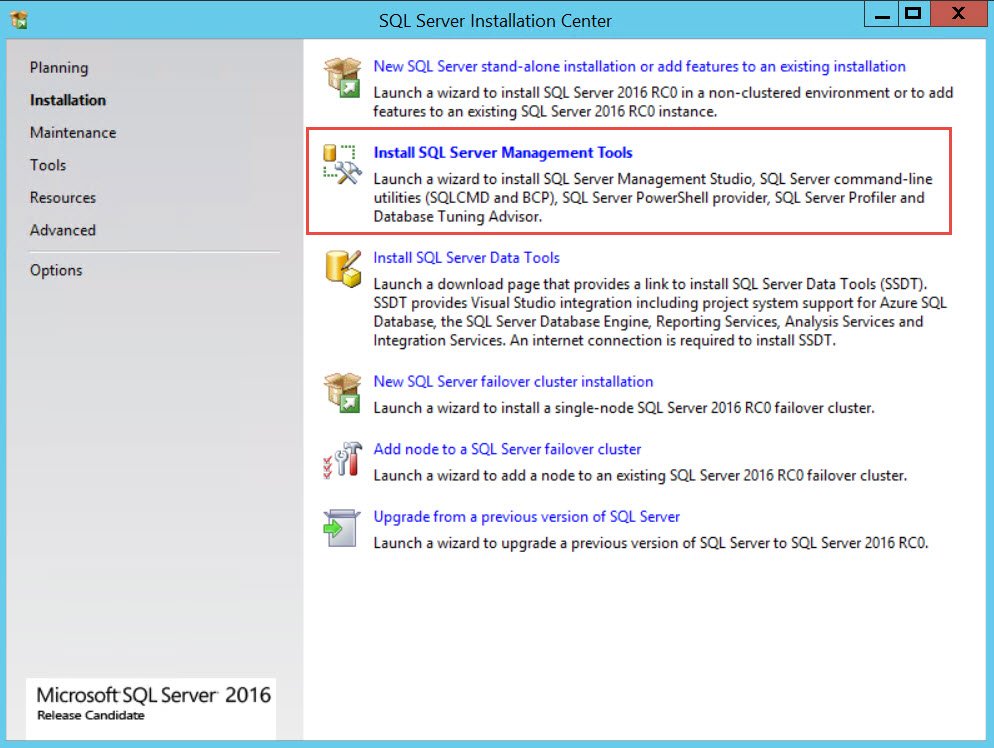

- #Download sql server 2008 r2 management studio only install#
- #Download sql server 2008 r2 management studio only update#
- #Download sql server 2008 r2 management studio only windows#
To install SSMS 2016 you first need to download it. Microsoft states that there is no specific restrictions for using SSMS 2016 with SQL Server 2000 or SQL Server 2005 but all of the features may not work properly. The new SSMS 2016 is able to manage multiple different SQL Server releases. For a complete list of all of the features in SSMS 2016 you can check out Features in SQL Server Management Studio Managing Multiple SQL Server Instances with SSMS 2016 There’s also a new activity monitor with filtering and automatic refresh. SSMS 2016 also includes a new SQL PowerShell module and new cmdlets that work with Always Encrypted, SQL Agent, and SQL Error Logs. It includes a wizard for the new Always Encrypted feature and a new quick launch toolbar to quickly find different menu items. First, SSMS 2016 is now based on the Visual Studio 2015 Isolated Shell. SSMS has a number of core changes compared to earlier versions of SSMS. Separating the SSMS installation from the main SQL Server Installation Center makes it easier to install SSMS on a separate systems. In addition, a best practice for managing SQL Server is to run SSMS from a networked workstation rather than running SSMS directly on the SQL Server system itself.

#Download sql server 2008 r2 management studio only update#
First, this allows Microsoft to update SSMS more frequently than they were able to in the past when it was bundled in with the main release. There a number of reasons Microsoft has made this change. Instead you need to install SSMS separately. Now SSMS is not installed as a part of the main SQL Server installation process. That is no longer the case with SQL Server 2016. In previous releases SSMS was installed as a part of the SQL Server installation itself from the SQL Server Installation Center. This should work for the " ADV_SSMS" Feature (instead of "SSMS") too, which is the management studio extended variant (profiling, reporting, tuning, etc.With the SQL Server 2016 release Microsoft has changed the way that they are delivering SQL Server Management Studio (SSMS). Just look at the start menu, if the command is ready, if it has succeeded. The /INDICATEPROGRESS parameter is useless here, the whole command takes a number of minutes and is 100% silent without any acknowledgement. "%~dp0SQLManagementStudio_圆4_ENU.exe" /Q /ACTION="Install" /FEATURES="SSMS" /IACCEPTSQLSERVERLICENSETERMSįor 2008 without R2 it should be enough to omit the /IACCEPTSQLSERVERLICENSETERMS flag, i guess. I´ve already put it in a batch syntax here: off SQL Express with Tools), if possible, but there are some scenarios, where you want to add SSMS at a SQL derivative without that tools, afterwards: (tried out with SQL Server 2008 R2 Express, one instance installed and having downloaded SQLManagementStudio_圆4_ENU.exe)Īs pointed out in this thread often enough, it is better to use the original SQL server setup (e.g. The answer by dyslexicanaboko hits the crucial point, but this one is even simpler and suited for command line (unattended scenarios):

SQL Server Management Studio 2008 R2 Express commandline: It should be selected already, if not then select it of course and press next. Heeeeeyyyy look at that, it has a check box for Management Studio. Press next until you see the features selection portion. It doesn't sound right I know - it is very confusing and counter intuitive, but this seems to be the way to install management studio. You need to select " Perform a new installation of SQL Server 2008". Run the setup, when you get to the point where it asks you to " Perform a new installation of SQL Server 2008" or " Add features to an existing instance of SQL Server 2008", this part is the CONFUSING PART (HEY MICROSOFT TAKE NOTES, DON'T DO THIS KIND OF STUFF).Īs much as you want to select "Add features to an existing instance of SQL Server 2008" DON'T!!!! What I gathered from these explanations is to do the following:ĭownload the SQL Server Management Studio install from
#Download sql server 2008 r2 management studio only windows#
I am not sure if my instructions will be 100% accurate, but in my instance, because I installed VS2010 on a fresh copy of Windows 7, the VS2010 installer installs SQL Server 2008 Express for you, so from this point I just need the Management Studio. This link has the exact steps involved to install everything properly: This link is an experience someone else had: I found some articles to be of major use:


 0 kommentar(er)
0 kommentar(er)
